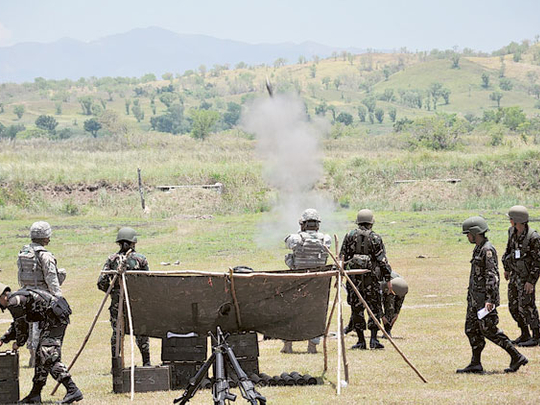
Manila The USS North Carolina was docked on May 14, 2012 at Subic Bay in Olongapo for a five-day port visit. The trip was largely dismissed as a simple port call, but it was made unannounced and at the last minute by a nuclear-powered submarine.
The visit was also among the first calls by a submarine in Subic, a former US Navy base, since the Americans pulled out from the facility in 1991 with the repeal of the Bases Treaty by the Philippine Senate.
According to Armed Forces of the Philippine spokesman Colonel Arnulfo Burgos Jr, the visit was simply an example of a developing military relationship.
The Philippines and the US have been conducting joint drills since 2000. There are at least 300 US troops stationed in military bases across the country, mainly in Mindanao.
But the arrangement goes beyond the Philippines being used as a transit point, where ships and planes can resupply and refuel.
The stop-off has been described as an example of “increasing US military presence” as well as influence in the country.
The visit underscored the importance of the Philippines in the overall strategic interest of America’s Pacific operations. Left-wing multi-sectoral group Bagong Alyansang Makabayan (Bayan) said the US was taking fresh interest in the Philippines and the region in general as a result of changing realities.
China factor
It is perceived that the US is trying to counter the fast-growing power of China in the region
Bayan deputy secretary-general Eleanor de Guzman said the US had motives other than briefly using the bases.
“We kicked out their large military bases but, in cahoots with Philippine officials, they were able to return through the VFA (visiting forces agreement),” she said.
“Now the entire country is in danger of becoming an even larger American military base with President Barrack Obama’s so-called pivot to Asia.
“The decades of military intervention, of abuses and violation of our sovereignty as a people in the hands of American troops are enough.”
The US maintained the Philippines as a colony until 1946.
Defence Secretary Leon Panetta recently announced the US will move 60 per cent of its warships from the Atlantic to the Pacific over the coming years.
De Guzman said Bayan will continue to resist plans by the US military to station more troops in secret bases around the country, to conduct more training exercises and to dock more US warships at Philippine ports.
Bayan repeated its warning to the government of President Benigno Aquino III that its efforts to allow more US troops and ships in the country are threatening peace and stability.
The militant organisation also claimed the arrival of the USS North Carolina had prompted China to deploy five warships nearby.
During the Cold War period, the US used its bases in the Philippines to back-up forces deployed in Vietnam.
In an era where the Russian threat has diminished and China is seen as an emerging player, the Philippines may yet reprise its role as a base for the Americans.
The only difference now is that China is much closer and the question of how much Washington is willing to give for using the country as a stepping stone for its own interests.












